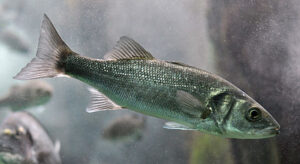
TEL AVIV, Israel (Press Release)– An extensive international study led by researchers from Tel Aviv University (TAU) found a decline in the abundance of marine fish species that move rapidly toward the poles to escape rising sea temperatures.
Many animal species are currently moving toward cooler regions as a result of global warming, the researchers say, but the velocity of such shifts varies greatly for different species. Examining thousands of populations from almost 150 fish species, the researchers show that, contrary to the prevailing view, rapid range shifts coincide with widescale population declines. According to the study, a poleward shift of about 10 miles (17 km) per year may result in a decline of 50% in the abundance of populations on average.
The international study was led by PhD student Shahar Chaikin and Professor Jonathan Belmaker from TAU’s School of Zoology in the George S. Wise Faculty of Life Sciences and the Steinhardt Museum of Natural History at TAU. The paper was published on March 8, 2024, in the journal Nature Ecology & Evolution.
For the first time, the new study correlated two global databases: a database that tracks fish population size over time, and a database that compiles range shift velocities among marine fishes. Altogether, 2,572 fish populations belonging to 146 species were studied, mostly from the Atlantic and Pacific Oceans in the Northern Hemisphere.
“We know that climate change causes animal species to move — northward, southward, upwards, or downwards — according to their location relative to cooler regions,” Professor Belmaker explains. “In the mountains they climb upwards, in the oceans they dive deeper, in the Southern Hemisphere they move south toward Antarctica, and in the Northern Hemisphere they move north toward the North Pole.
“In the present study we wanted to see what happens to species that move from one place to another. Do they benefit by increased survivability, or are they in fact harmed by the shift — which was initially caused by greater vulnerability to climate change? We found that the faster fish shift toward the poles, the faster their abundance declines. Apparently, it is difficult for these populations to adapt to their new surroundings.”
“We found that species such as the European seabass shifting their geographical range more rapidly towards the poles are in fact more likely to lose their abundance,” Chaikin adds. “Additional findings show differences between populations that are closer to or further from the poles within the geographical range of a particular species. While it might have been assumed that populations closer to the cooler polar margins of the species range would be less affected by climate change, we found that the opposite is true: fast poleward range shifts of populations from higher latitudes resulted in a more rapid decline in abundance compared to equatorial populations of the same species.”
The researchers say that the new findings can and should guide environmental decision-makers by enabling a reevaluation of the conservation status of various species and populations. The study’s results suggest that populations exhibiting rapid poleward range shifts require close monitoring and careful management. Pressures that threaten their survival can be mitigated through measures like fishing limits, for example.
“The common belief is that rapid range shifts safeguard a species against local population decline,” Professor Belmaker says. “But in this study, we found that the opposite is true. Apparently, species rapidly shifting their range in search of cooler temperatures do so because they are more vulnerable to climate change, and consequently require special attention. In the next stage of our research, we intend to investigate this causal relationship in marine species other than fish.”
*
Preceding provided by Tel Aviv University